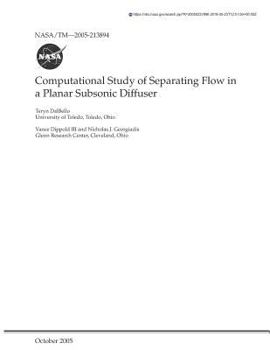Computational Study of Separating Flow in a Planar Subsonic Diffuser
A computational study of the separated flow through a 2-D asymmetric subsonic diffuser has been performed. The Wind Computational Fluid Dynamics code is used to predict the separation and reattachment behavior for an incompressible diffuser flow. The diffuser inlet flow is a two-dimensional, turbulent, and fully-developed channel flow with a Reynolds number of 20,000 based on the centerline velocity and the channel height. Wind solutions computed with the Menter SST, Chien k-epsilon, Spalart-Allmaras and Explicit Algebraic Reynolds Stress turbulence models are compared with experimentally measured velocity profiles and skin friction along the upper and lower walls. In addition to the turbulence model study, the effects of grid resolution and use of wall functions were investigated. The grid studies varied the number of grid points across the diffuser and varied the initial wall spacing from y(sup +) = 0.2 to 60. The wall function study assessed the applicability of wall functions for analysis of separated flow. The SST and Explicit Algebraic Stress models provide the best agreement with experimental data, and it is recommended wall functions should only be used with a high level of caution.DalBello, Teryn and Dippold, Vance, III and Georgiadis, Nicholas J.Glenn Research CenterSEPARATED FLOW; COMPUTATIONAL FLUID DYNAMICS; DIFFUSERS; SUBSONIC FLOW; PLANAR STRUCTURES; MATHEMATICAL MODELS; K-EPSILON TURBULENCE MODEL; TWO DIMENSIONAL FLOW; WALLS; INLET FLOW; REYNOLDS STRESS; VELOCITY DISTRIBUTION; WIND (METEOROLOGY)
Format:Paperback
Language:English
ISBN:1723714976
ISBN13:9781723714979
Release Date:January 1
Publisher:Independently Published
Length:30 Pages
Weight:0.21 lbs.
Dimensions:0.1" x 8.5" x 11.0"
Customer Reviews
0 customer rating | 0 review
There are currently no reviews. Be the first to review this work.





















